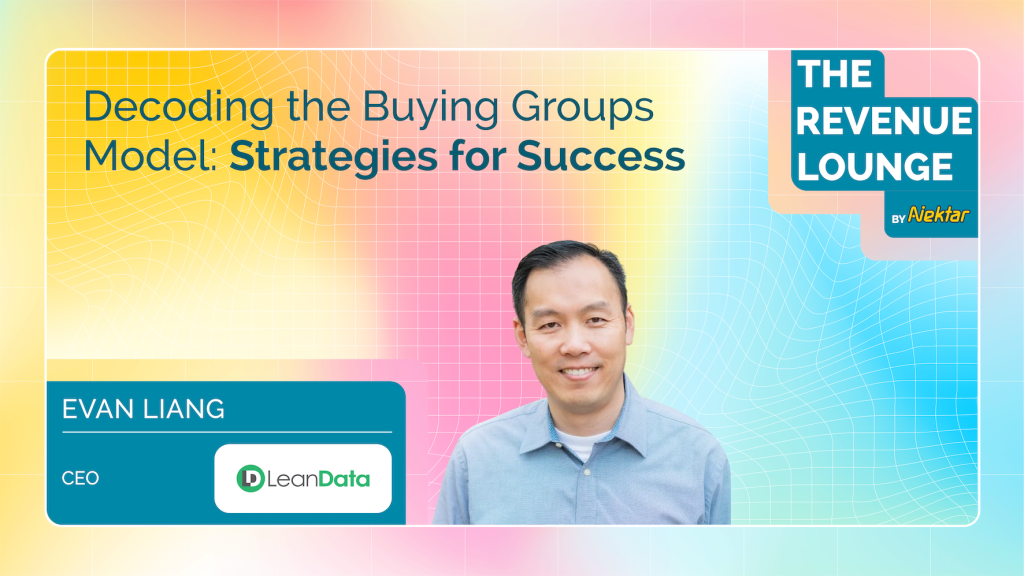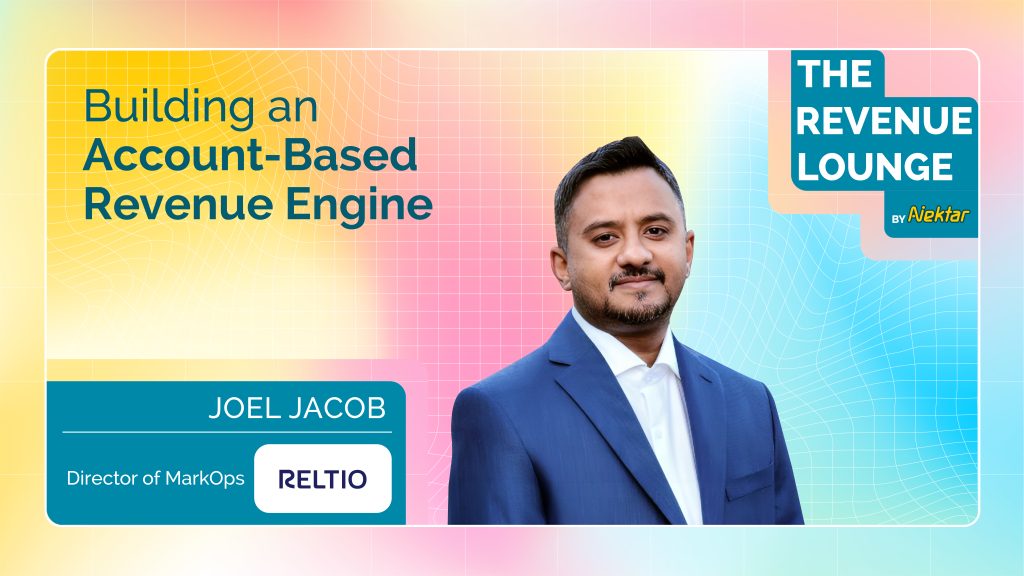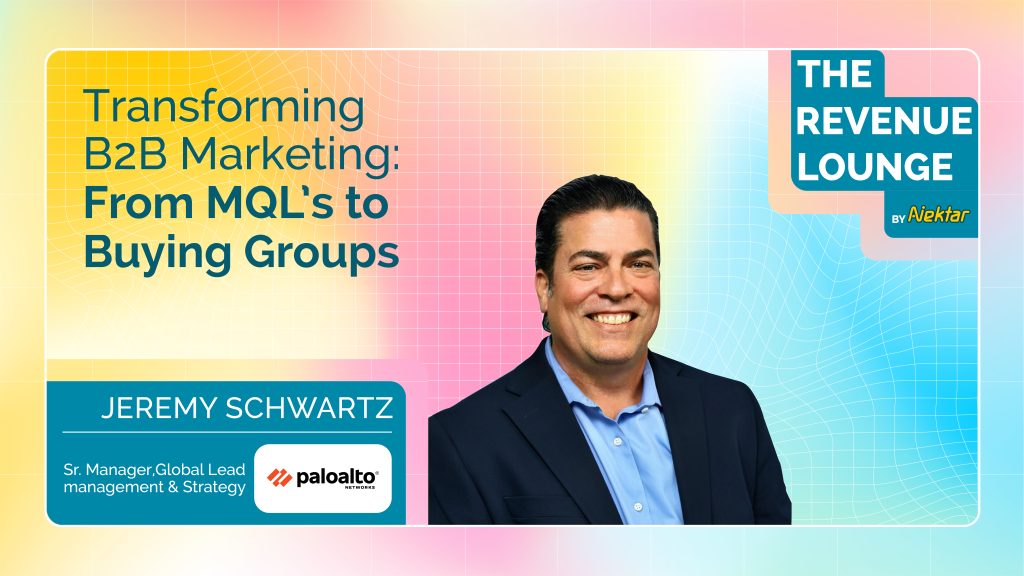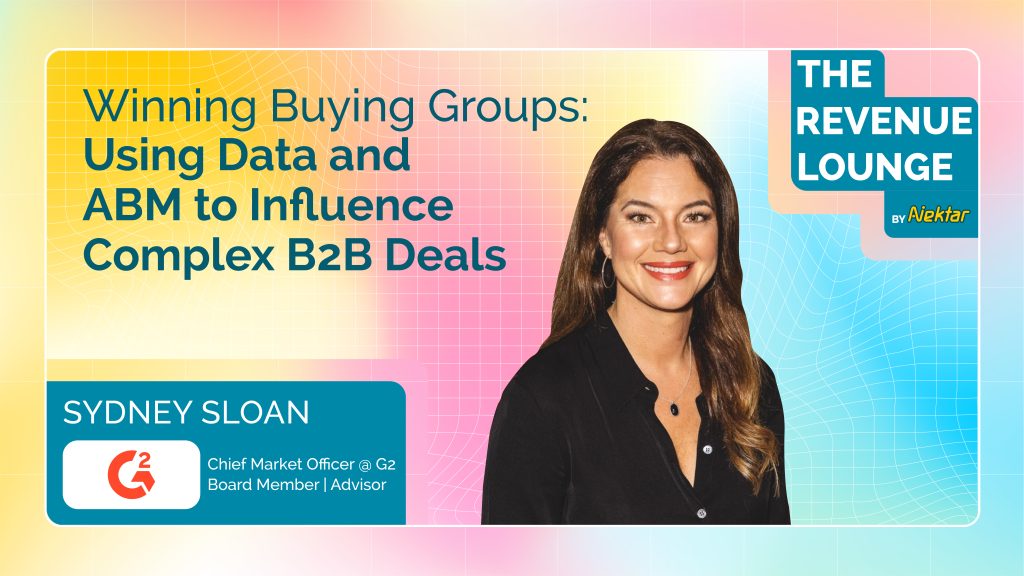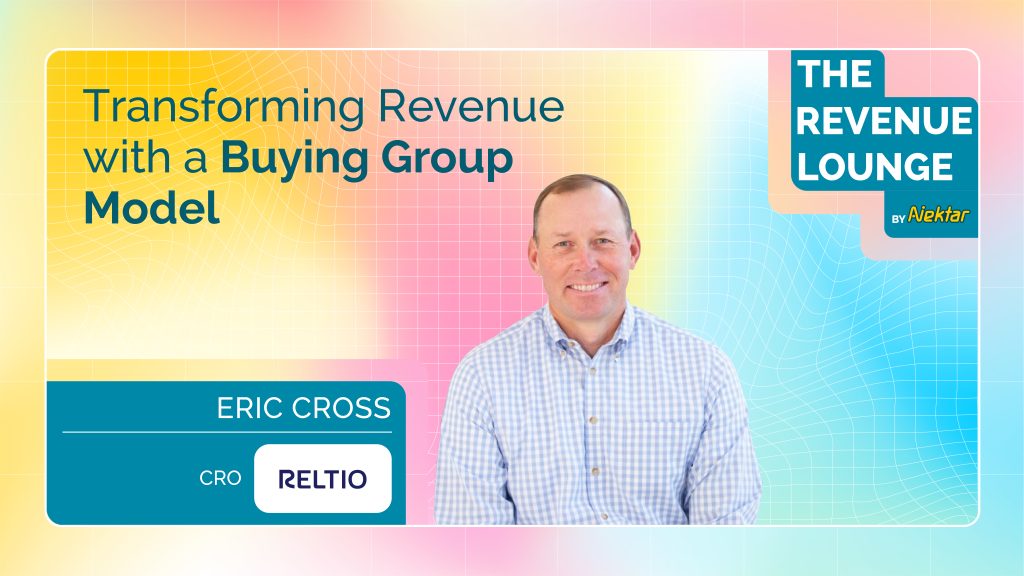Decoding the Buying Group Model: Strategies for Success
Decoding the Buying Group Model: Strategies for Success A conversation with Evan Liang, Founder & CEO at Leandata. In the traditional B2B playbook, the Marketing Qualified Lead (MQL) has long been the dominant metric for gauging marketing performance. It’s simple: someone fills out a form, downloads an eBook, or registers for a webinar, and voilà—they’re an MQL. That lead is then tossed over the fence to sales, where all too often it languishes, ignored or unqualified. But the B2B buying journey has fundamentally changed—and with it, the metrics and models we use must also evolve. Enter buying groups. A concept once understood only by experienced sellers, buying groups are now becoming central to how high-performing revenue teams plan, engage, and convert demand in today’s complex enterprise environments. In this episode of The Revenue Lounge, Randy Likas sits down with Evan Liang, Founder and CEO of LeanData, to unpack what buying groups actually are, why they’re gaining momentum, and most importantly—how to operationalize them successfully within your sales and marketing workflows. Facebook Twitter Youtube The Origins of LeanData and the Evolution of Go-To-Market Strategy Before founding LeanData, Evan Liang had lived the problem firsthand. Working at a previous company, he struggled to integrate marketing automation with Salesforce in a way that made the sales and marketing teams more efficient. The process was chaotic, data was fragmented, and lead routing felt like a game of chance. This personal frustration became the foundation for LeanData, which began as a lead-routing platform but quickly evolved into something much bigger: a revenue orchestration platform designed to help GTM teams align around data, process, and outcomes. “Our original mission was to make sales and marketing more efficient through data and processes. That mission hasn’t changed—only expanded.” – Evan Liang LeanData now supports over 1,000 customers, helping them orchestrate complex GTM motions beyond lead routing, including ABM and now—buying groups. Why Buying Groups? Why Now? While the concept of buying groups isn’t new to sales teams—who’ve always had to engage multiple stakeholders to close a deal—this concept is now becoming institutionalized. It’s gaining traction at the organizational level, especially in enterprise environments where buying cycles are long and decisions are rarely made by a single person. Several macro trends have converged to push buying groups into the spotlight: The Buyer Journey Has Gone DigitalBuyers today self-educate long before talking to a sales rep. Much of the research and decision-making happens across digital channels and is distributed among a group of stakeholders. Deals Are Taking Longer and Involve More PeopleResearch from Gartner and Forrester shows that the average B2B deal now involves 6 to 10 stakeholders. That makes tracking individual MQLs increasingly irrelevant. Technology Has Finally Caught UpThe concept of buying groups has existed in CRM structures for decades. The “opportunity-contact-role” relationship has always been there—but underutilized due to lack of data and automation. Today, with tools like LeanData and Nektar, organizations can automate and scale this buying group motion. “In some respects, buying groups are not a new change—they’re just the next evolution. The technology and processes are finally catching up to how enterprise sales have always worked.” – Evan Liang https://www.youtube.com/watch?v=rNo5hizuxRA&t=639s The MQL Problem: Leads in Isolation The shortcomings of the MQL model are becoming more apparent. Marketing teams are sending individual leads to sales—often with little context, incomplete engagement history, and no visibility into whether that lead is part of a larger buying motion. This results in: Lead duplication (same person, multiple forms) Low conversion rates Frustrated sales reps who disregard “low-quality” leads In contrast, a buying group-centric approach clusters engagement data across multiple personas, providing a fuller picture of interest and intent. “An MQL is a buying group of one. That’s fine for transactional deals. But in enterprise sales, it’s just not enough.” – Evan Liang Why Adoption Is Lagging (and How to Overcome It) Evan recommends a “crawl, walk, run” approach: “Start small. Pilot in a region or with one team. Show success and build momentum.” 🎯 Pilot Criteria Matrix Despite growing interest and case studies showing tangible impact—higher win rates, faster conversions—many organizations are still hesitant to embrace buying groups. Why? The answer: Change is hard. Adopting a buying group model requires shifts in: Data models GTM processes Cross-functional alignment Sales and marketing roles “Everyone wants change… until it requires them to change something.” – Evan Liang Evan notes that the early adopters of buying groups today are mostly large enterprises—unlike ABM, which was championed by early-stage startups. These enterprises have more to gain because they’re more likely to struggle with disconnected buying signals across large organizations. How to Get Started with Buying Groups Rather than boiling the ocean, Evan recommends a phased approach to adoption. Start Small: Pilot Projects Choose a specific region, product line, or sales team. Focus on enterprise segments with long sales cycles and multiple personas. Measure and report early wins to build momentum. “Start with a pilot. Show the revenue impact. Then scale.” – Evan Liang Executive Alignment Is Critical Buying groups are not a departmental initiative. They require support from executive leadership across sales, marketing, and operations. Without that alignment, even the best technology won’t stick. “Don’t go rogue. Get executive buy-in early. It’s essential for success.” – Evan Liang Redefining Roles: What Changes in Your GTM Org Implementing buying groups doesn’t just affect systems—it affects how people work. Here’s how: BDRs and SDRs shift from lead qualification to identifying and engaging buying personas. Marketing teams move from lead-gen to persona enablement, filling gaps in mid-funnel engagement. Sales benefits from more contextual data on who’s involved and who’s missing. Evan also emphasizes that buying group strategies are not one-size-fits-all. Every company is a snowflake. Some teams may prefer using zero-dollar opportunities as placeholders, others may use custom objects. The key is to design a process that fits your business—and then align your tech stack accordingly. The Role of Technology: You Might Be Closer Than You Think Evan reassures that most companies already have the
